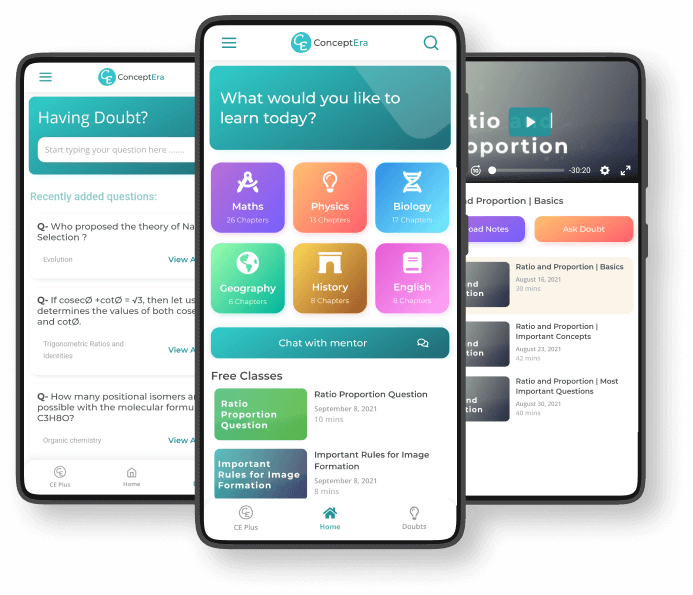Group-A
1. Choose the correct answer.
1.1 Jibaner Jharapata is —
(a) a novel
(b) a book of poems
(c) a biography
(d) an autobiography (Ans)
1.2 Somprakash was —
(a) a daily paper
(b) a weekly paper (Ans)
(c) a fortnightly paper
(d) a monthly paper
1.3 The publisher of English Translation of Neeldarpan was —
(a) Kaliprasanna Singha
(b) Michael Madhusudan Dutta (Ans)
(c) Harischandra Mukhopadhyaya
(d) Rev. James Long
1.4 The practice of Sati was prohibited in —
(a) 1828 AD
(b) 1829 AD
(c) 1830 AD
(d) 1856 AD (Ans)
1.5 The Ideal of Sarva Dharma Samannwaya was propagated by —
(a) Bijoy Krishna Goswami
(b) Swami Vivekananda
(c) Sri Ramakrishna (Ans)
(d) Keshab Chandra Sen
1.6 ‘Kol’ rebellion (1831-32) took place in —
(a) Medinipur
(b) Jhargram
(c) Chhotonagpur (Ans)
(d) Ranchi
1.7 The First Forest Act was passed in India in —
(a) 1859 AD
(b) 1860 AD
(c) 1865 AD (Ans)
(d) 1878 AD
1.8 The Revolt of 1857 was described as India’s First War of Independence by —
(a) Rameshchandra Mazumdar
(b) Surendranath Sen
(c) Binayak Damodar Savarkar (Ans)
(d) Dadabhai Nauroji
1.9 The rule of East-India Company in India came to an end in —
(a) 1857 AD
(b) 1858 AD (Ans)
(c) 1819 AD
(d) 1847 AD
1.10 First President of Indian Association was —
(a) Surendranath Bandyopadhyaya (Ans)
(b) Anandamohan Bose
(c) Rev Krishnamohon Bandyopadhyaya
(d) Sibnath Sastri
1.11 The first printed book in Bengali Language was —
(a) Barnaparichay
(b) A Grammar of Bengali Language (Ans)
(c) Mangal Samachar Matier
(d) Annadamangal
1.12 The scientist of the Indian Association for the Cultivation of Science who was awarded Nobel prize was —
(a) Jagadish Chandra Bose
(b) C V. Raman (Ans)
(c) Prafulla Chandra Roy
(d) Satyendranath Bose
1.13 The Boycott movement economically affected —
(a) Peasants of Bengal (Ans)
(b) Middle Class
(c) Zamindars
(d) Students
1.14 Baba Ramchandra led peasants movement in —
(a) Bihar
(b) United Province (Ans)
(c) Rajasthan
(d) Maharashtra
1.15 Rampa Tribal rebellion was organised in—
(a) Malabar region
(b) Konkon Coastal area
(c) Orissa
(d) Godavari Valley (Ans)
1.16 ‘Nari Karma Mandir’ was established by—
(a) Urmila Devi (Ans)
(b) Basanti Devi
(c) Kalpana Dutta
(d) Leela Roy (Nag)
1.17 The revolutionary group founded by Surya Sen was known as—
(a) Anushilan Samity
(b) Gadar Dal
(c) Indian Republican Army (Ans)
(d) Bengal Volunteers
1.18 Dalits were called ‘Harijan’ by—
(a) Jyotiba Phule
(b) Narayan Guru
(c) Gandhiji (Ans)
(d) Dr. Ambedkar
1.19 Separate linguistic state of Andhra Pradesh was formed in the year—
(a) 1947 AD
(b) 1950 AD
(c) 1953 AD (Ans)
(d) 1955 AD
1.20 Goa became a part of India in—
(a) 1947 AD
(b) 1956 AD
(c) 1961 AD (Ans)
(d) 1971 AD
Group-B
2. Answer the following questions:
(Attempt one question from each sub-group, in all answer 16 questions):
Sub-group—2.1
Answer each of the following questions in one sentence:
2.1.1 In which historical context the ‘Bharatmata’ was painted ?
Ans: In the context of Swadeshi Movement the ‘Bharatmata’ was painted.
2.1.2 Where was founded the All India Trade Union Congress (1920)?
Ans: In Bombay the All India Trade Union Congress (1920) founded.
2.1.3 In which year was the Forward Bloc founded ?
Ans: In 1939 was the Forward Bloc founded.
2.1.4 Who is the founder of the Matua Community ?
Ans: Hirachand Thakur is the founder of the Matua Community.
Sub-group—2.2
Identify which of the following is ‘True’ or ‘False’:
2.2.1 Uday Shankar encouraged educated middle class Bengalees in dance. True
2.2.2 Indian Association protested against the Ilbert Bill. False
2.2.3 Faraji is the name of an ancient tribe.True
2.2.4 Vidyasagar introduced Lino type in Bengali. False
Sub-group—2.3
Match Column ‘A’ with Column ‘B’:
| Column A | Column B |
|---|---|
| 2.3.1) Jawaharlal Nehru | “Letters from a Father to his Daughter” |
| 2.3.2) Birendranath Sashmal | Non co-operation movement |
| 2.3.3) Kaliprasanna Singha | Hutom Pyanchar Naksha |
| 2.3.4) Dr. Ambedkar | Poona Pact (1932) |
Sub-group—2.4
On the given outline map of India, locate and lebel the following places:
2.4.1 Areas of Chuar Rebellion,
2.4.2 Region of Munda Rebellion,
2.4.3 Centre of 1857 Revolt—Jhansi,
2.4.4 Princely State—Junagarh.
Sub-group—2.5
Select the correct interpretation of the following statements:
2.5.1 Statement: Nineteenth century Bengal Renaissance was limited in scope.
Interpretation-1: Because only rural Bengal experienced it.
Interpretation-2: Because this renaissance was limited to the field of literature.
Interpretation-3: Because this renaissance was limited to western educated progressive society.
2.5.2 Statement: The British Govt, passed the Act-Ill in 1872.
Interpretation-1: Its object was to unite the Hindu, Muslim and Christian Communities.
Interpretation-2: Its object was to develop the economic, social and cultural development of the people.
Interpretation-3: Its object was to ban child marriage and polygamy and also to legalise widow re-marriage.
2.5.3 Statement: Rabindranath didn’t like the colonial system of education.
Interpretation-1: Because this system was expensive.
Interpretation-2: Because the medium of instruction was vernacular.
Interpretation-3: Because this system did not help the mental development of the student.
2.5.4 Statement: Sarala Devi Chowdhurani established Lakshmir Bhandar.
Interpretation-1: To sale foreign goods.
Interpretation-2: To help woman who were engaged in movements.
Interpretation-3: To sale indigenous goods.
Group—C
3. Answer the following questions in two or three sentences only (any eleven):
3.1 What is the importance of history of environment ?
Ans: Importance of history of environment lies in fact that it helps to understand human power in relation to tge nature. It also helps to realize the human role in conservation of nature.
3.2 How are memoirs or autobiographies used as sources of modern Indian history ?
Ans: Memoir is a collection of memories that an individual writes about moments or events of his or her life, while an autobiography tells the story of a life.
3.3 What is Macaulay’s Minute ?
Ans: Macaulay’s minute is an insttruction given by Lord Macaulay. In his minute he said to introduce English eduction in India through the medium of english.
3.4 What was the role of Young Bengal in social reform ?
Ans: The students of Derozio, collectively known as the Young Bengal. They played an important role in social reform of contemporary India. They spoke loudly about the evil effects of Idoltary and superstition, so moch so that some of them renounced their sacred thread.
3.5 Why is Dudu Mian remembered ?
Ans: Dudumiyan, leader of Ferazi movement is remembered because he gave a frequent call to the peasants to rise against the oppressive zamindars, indigo-planters and money-lenders.
3.6 What was the role of Harishchandra Mukhopadhyay in the Indigo Revolt ?
Ans: Harishchandra Mukhopadhyay who came of a middle class family was virtually driven to financial ruin as he offered help to the peasants. As an editor of Hindu Patriot he did not hesitate to publicize the grievances of indigo-cultivators.
3.7 What was the main objective of the Queens Proclamation (1858) ?
Ans: The main objective of the Queen’s proclamation was to bring an end to the east India Company’s rule in India.
3.8 With what purposes are Cartoons drawn ?
Ans:
3.9 What was the role of Panchanan Karmakar in the development of the printing press in Bengal ?
Ans: Panchanan Karmakar created the first Bengali typeface for printing under the supervision of english typographer Charles Wilkins.
3.10 What is the importance of the Battala publications in the history of the Bengali printing press ?
Ans: Battala is the name of an area in North Calcutta where printing and publications began in 19th century. They print with the European technology of wood-cuts and lithographs, using such technology they printed their books.
3.11 Why was the ‘Eka’ movement initiated ?
Ans: Eka movement initiated because of high rent which was generally higher than 50% if recorded rent in some areas.
3,12 Why was the Bardauli Satyagraha movement organised ?
Ans: Bardoli Satyagraha was organized because the burden of tax on peasants was 22% to 60% more than the previous rate of tax.
3.13 With what objective was the Anti-Circular Society founded ?
Ans:
3.14 Why was the Dipali Sangha established ?
Ans: Dilali Sangha qas formed to spread education among women. It also aimed at incucating self-reliance among women and guide them to sort their own problem.
3.15 Under what circumstances Hari Singh, the ruler of Kashmir signed the instrument of Accession ?
Ans: The Instrument of Accession is a legal document executed by Maharaja Hari Singh, ruler of the princely state of Jammu and Kashmir, on 26 October 1947. By executing this document under the provisions of the Indian Independence Act 1947, Maharaja Hari Singh agreed to accede to the Dominion of India.
3.16 Why was the States Reorganisation Commission (1953) formed ?
Ans: The State Reorganisation Commission (1953) was formed to reorganize the state boundaries.

